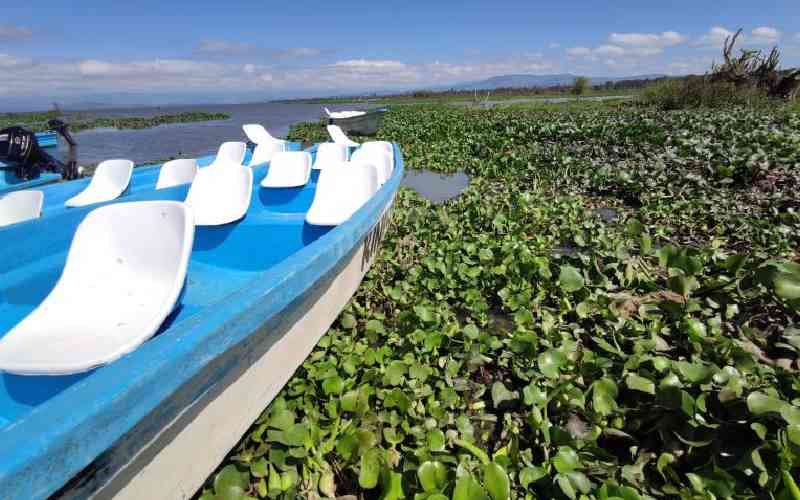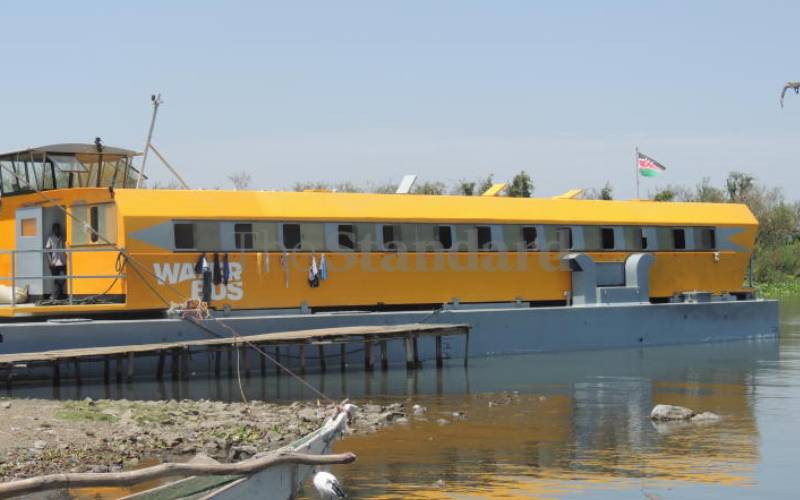When Prof Stephen Agong’ floated the idea of converting Lake Victoria into a fish cage, many thought he was out of his mind.
Those initial attempts by the Jaramogi Oginga Odinga University of Science and Technology (Jooust) Vice Chancellor to sell the idea to Miyandhe community, which is predominantly dependent on fishing as their source of income, did not yield results.
The fishermen even refused to go to the lake and have a first-hand look at what was being talked about.
But a few months later, it turns out that what Miyandhe people thought was fantasy is now a glaring reality.
A visit by The Standard to the area where cage fish farming is being practised revealed that this enterprise may very well be the next wave of hope for the county’s lakeside community.
According to Prof Agong’, cage fish farming involves putting fingerlings into a cage, to protect them from predators, providing them with a controlled diet then monitoring and harvesting the stock once it is ready for consumption.
HIGH RETURNS
It is a simple and highly productive fish farming technique that many locals have not considered. But for a valid reason.
Though the enterprise is promising and returns can be rewarding, setting up a single fish cage is quite costly for the common
fisherman.
“A cage measuring around 2x4 metres can cost at least Sh80,000. That would be more than the annual returns of most fishermen. The good news is that you can get your money back in less than a year,” explained Agong’.
According to the Professor, if you invest the said Sh80,000 to set up a fish cage and start your farm with about 2,000 fingerlings, you will harvest about 90 per cent of the total number of fingerlings you started with.
“This translates to 1,800 fish. A fully grown Tilapia or Nile perch is sold at around Sh150 in the local market. Therefore, with a harvest of 1,800 fish, you are talking about a whooping Sh270,000 in six months,” he said.
He continued: “With this kind of return, you would have gotten your initial investment capital back plus a disposable income of Sh190,000.’’
The scholar describes this fish farming technique as a goldmine that those living close to the lake are yet to discover.
UNTAPPED POTENTIAL
Stay informed. Subscribe to our newsletter
Jooust is currently in the process of installing the fish cages at its pilot project site in Miyandhe, Bondo sub-county where the plan is to build seven fish cages in phase one.
“So far we have invested close to Sh1 million, although the whole project is estimated at over Sh5 million,” the vice chancellor said.
If things go as planned, the multimillion shilling enterprise will give birth to a reliable source of income for the university and the
community will reap unimaginable benefits.
Prof Agong’ said the university projects being able to recoup its original capital investment, possibly after the first harvest, and then reinvest the revenue to upscale the project.
“Miyandhe residents will be given a chance to each own a Sh80,000 cage on credit, which they will be required to repay within six months,” he said.
 The Standard Group Plc is a
multi-media organization with investments in media platforms spanning newspaper
print operations, television, radio broadcasting, digital and online services. The
Standard Group is recognized as a leading multi-media house in Kenya with a key
influence in matters of national and international interest.
The Standard Group Plc is a
multi-media organization with investments in media platforms spanning newspaper
print operations, television, radio broadcasting, digital and online services. The
Standard Group is recognized as a leading multi-media house in Kenya with a key
influence in matters of national and international interest.
 The Standard Group Plc is a
multi-media organization with investments in media platforms spanning newspaper
print operations, television, radio broadcasting, digital and online services. The
Standard Group is recognized as a leading multi-media house in Kenya with a key
influence in matters of national and international interest.
The Standard Group Plc is a
multi-media organization with investments in media platforms spanning newspaper
print operations, television, radio broadcasting, digital and online services. The
Standard Group is recognized as a leading multi-media house in Kenya with a key
influence in matters of national and international interest.










